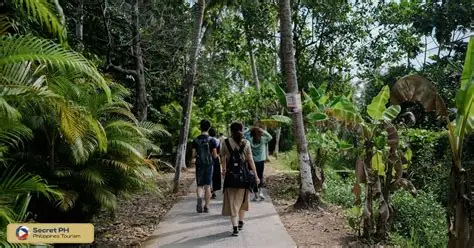Tourism is a powerful force for economic growth, cultural exchange, and community development. However, if not properly managed, it can lead to serious environmental degradation including pollution, habitat loss, and overuse of natural resources. As tourism continues to grow globally, finding a balance between promoting visitor growth and protecting the environment has become a top priority.
So, what strategies can be used to achieve this balance?
1. Sustainable Tourism Planning
The foundation of balancing tourism and environmental protection lies in strategic planning. Governments, tourism boards, and communities must develop tourism master plans that integrate environmental sustainability. This includes:
- Conducting environmental impact assessments before developing tourist sites.
- Limiting the number of visitors in ecologically sensitive areas.
- Promoting long-term sustainability over short-term profits.
2. Eco-friendly Infrastructure and Green Technology
Investing in eco-friendly infrastructure is essential. This includes building green hotels that use renewable energy, recycling water, and minimizing waste. Public transport systems that reduce carbon emissions should also be promoted. Tourists can be encouraged to use bicycles, electric buses, or shared transportation instead of private cars.
3. Carrying Capacity Management
Each destination has a carrying capacity the maximum number of visitors it can handle without harming its environment. By setting limits on daily or seasonal visitors, destinations can reduce overcrowding and prevent ecosystem stress. For example, national parks and heritage sites can introduce timed entry tickets, quotas, or advance bookings.
4. Community Involvement and Benefit Sharing
Local communities should not only be involved in tourism development but also directly benefit from it. When locals have a stake in tourism, they are more likely to protect their natural surroundings. Supporting community based tourism encourages environmentally responsible behavior and preserves local traditions, cultures, and environments.
5. Environmental Education and Awareness Campaigns
Educating both tourists and tourism operators about environmental responsibility is crucial. This can be done through:
- Signage and guides at tourist sites.
- Eco-awareness campaigns on social media and travel platforms.
- Training programs for tour operators and hotel staff.
When tourists understand the impact of their actions, they are more likely to behave respectfully avoiding littering, sticking to marked trails, and conserving water.
6. Promotion of Off-Season and Lesser-Known Destinations
To reduce pressure on popular tourist spots, governments and tour companies can promote off season travel or direct visitors to less crowded areas. This helps distribute the environmental burden more evenly while also stimulating economic growth in underdeveloped regions.
7. Strict Regulation and Enforcement
Governments must establish and enforce environmental regulations, including:
- Banning single use plastics in tourist areas.
- Penalizing illegal logging, wildlife poaching, or environmental vandalism.
- Enforcing zoning laws to prevent overdevelopment near natural habitats.
Proper monitoring systems should be in place to track environmental changes and ensure compliance.
8. Use of Certification and Eco-Labeling
Encouraging tourism businesses to obtain eco-certifications (like Green Globe or Earth Check) promotes high environmental standards. These certifications reward businesses that minimize waste, reduce energy usage, and protect biodiversity. Travelers are increasingly seeking eco labeled services as part of responsible tourism.
9. Investment in Conservation Projects
Part of the revenue generated from tourism should be reinvested in environmental conservation efforts. This can include:
- Reforestation projects.
- Marine life protection.
- Waste management and recycling programs.
Some destinations charge an “eco-tax” or environmental fee that directly funds these initiatives.
Conclusion
Balancing tourism growth and environmental protection is not only possible but essential for the long term viability of the tourism industry. With thoughtful planning, responsible practices, and collaboration among stakeholders, destinations can grow economically while preserving the natural beauty and resources that make them worth visiting in the first place. Sustainable tourism is not just a trend it is the future of travel.






